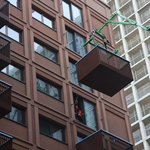Rainforest
Senior Member
Since refurbishing and expanding the SRT means that it's sticking around, I don't see a reason why we can't consider building branches and more expansions. We could send it down Ellesmere to Scarborough College, and if the Neilson-401 alignment is chosen for the SRT, then the Scarborough-Malvern LRT won't have to leave Kingston Road. I'm sure many people on this board would love that.
There are also opportunities to expand the SRT on the southern end to build the Eglinton Crosstown using SRT technology.
Since it looks like it's going to be sticking around for some time, I say go for it.
Branching SRT to serve Ellesmere and UTSC sounds good. That would be a relatively short new link, but leverage the existing portion of line.
Regarding Eglinton Crosstown, using the SRT / ICTS technology there would bring the costs to the subway territory, as it can not run in the on-street ROW like light rail. Yet, the capacity will remain in the light rail territory. Really the worst of the two worlds.




